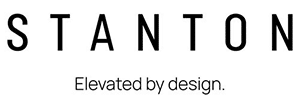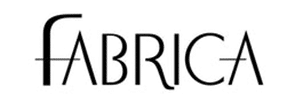Are Squeaky Floors a Structural Problem?

Squeaky floors can be a sign of both minor and major problems. Sometimes the noise comes from loose floorboards or poor installation. But other times, it can mean there are deeper issues like weak subfloors or broken joists. These need a professional to check and fix them.
Common reasons for squeaky floors include uneven subfloors, foundation issues, and high moisture levels. Fixing these squeaks quickly is important to avoid more damage and keep everyone safe. Using good materials and proper installation can help prevent squeaky floors.
Knowing why your floors squeak can help you find the right solution.
Identifying the Source
To effectively fix squeaky floors, it’s essential to identify the underlying cause of the noise. Squeaks typically occur when floorboards and floor joists rub against each other. Here are common reasons and steps to troubleshoot:
- Check for Loose Floorboards: Loose floorboards are a frequent culprit behind squeaks. When floorboards become detached from the nails or screws holding them down, they can move and create noise by rubbing against each other or the joists. Inspect where the floorboards meet the joists to ensure proper attachment.
- Inspect Installation Quality: Poor installation can lead to squeaky floors. Incorrectly placed nails or screws, or improper spacing, can cause floorboards to shift and produce noise. Carefully examine how the floor was installed to identify any errors.
- Consider Moisture Levels: Moisture content in the wood is crucial. Changes in humidity can cause wood to swell or shrink, resulting in warped or loose boards that squeak. Check moisture levels in both the floorboards and joists, especially in areas prone to humidity fluctuations.
Identifying these issues is essential for fixing squeaky floors effectively. Once you’ve pinpointed the problem, you can take appropriate measures to repair the floor and eliminate the squeaks. Regular maintenance and proper installation help prevent squeaks from recurring in the future.
Cosmetic Vs. Structural
Determining whether squeaky floors are a cosmetic issue or a structural problem is crucial for proper fixing. Squeaks can result from minor surface issues or more serious construction issues, and distinguishing between them can save time and money while ensuring safety. Here’s how to differentiate:
- Cosmetic Issue: Cosmetic issues involve minor problems that don’t affect the structure but can cause squeaking. These may include loose nails, small gaps, or slight misalignments in the floorboards. While not posing a safety risk, they can be annoying. For instance, a loose floorboard rubbing against another can create noise. These issues can typically be fixed by securing the floorboards or using a lubricant.
- Structural Issue: Structural issues indicate more significant problems with the building itself. This may include damaged joists, issues with the subfloor, or shifts in the foundation. Structural problems are serious and require careful inspection and fixing. Ignoring structural issues can lead to safety hazards and instability.
Understanding whether the squeak stems from a cosmetic or structural issue is essential for effective repair and long-term durability. While cosmetic issues may have simple solutions, structural issues require thorough assessment and professional attention to ensure the floor is fixed properly and remains safe and stable over time.
Common Causes
Squeaky floors can stem from several common problems, each requiring different fixes. Here are some common reasons and their solutions:
- Uneven Subfloor: An uneven subfloor can lead to gaps between the subfloor and the top flooring, causing squeaks. Ensure the base floor is level to prevent this issue. You may need to use shims or a self-leveling compound to even out the subfloor.
- Issues with Foundation: Problems with the foundation, such as settling or shifting, can misalign floor joists, causing boards to rub against each other or nails and creating squeaks. Addressing foundation issues may require professional help to stabilize the structure and prevent further movement.
- Moisture: High humidity can cause wood to expand and contract, loosening fasteners and creating gaps that lead to squeaks. Using construction adhesive during installation helps keep the subfloor and joists tightly together, reducing movement caused by moisture.
- Bad Fastening Techniques: Improperly driven nails or screws that miss the joist can allow floorboards to move, causing squeaks. Ensure fasteners are properly placed and driven into the joists during installation to prevent movement.
Understanding these common causes can guide you in finding the right solutions to fix squeaky floors effectively. Depending on the underlying issue, solutions may range from simple adjustments to more extensive repairs, ensuring your floors remain quiet and stable.
Diagnosing Squeaks
To determine the cause of floor squeaks and address them effectively, follow these steps:
- Locate Squeaky Spots: Walk around the floor and pinpoint the areas where the floor squeaks. Pay attention to areas with noticeable noise when pressure is applied.
- Check for Gaps Between Subfloor and Joists: Inspect the area between the subfloor and joists. Gaps can develop due to settling or poor installation, allowing movement that causes squeaks. Look for gaps where the subfloor may rub against fasteners.
- Inspect Fasteners: Check for loose or poorly placed fasteners (nails or screws) securing the subfloor to the joists. Loose fasteners can allow movement, contributing to squeaks. Tighten any loose fasteners and replace any that are damaged or poorly positioned.
- Inspect Joists: Examine the joists for any signs of issues such as bending, twisting, or being spaced too far apart. Structural problems with the joists can lead to an unstable floor, causing squeaks. Address any structural issues promptly.
- Consult a Structural Engineer: If you’re unsure about the structural integrity of your floor or if the issues seem complex, consider consulting a structural engineer. They can conduct a detailed assessment to identify underlying problems and provide recommendations for repairs to ensure structural stability.
- Addressing the Issues: Once identified, address gaps between the subfloor and joists by filling them with construction adhesive or shims to prevent movement. Tighten loose fasteners or replace them as needed. For structural issues with joists, repairs may involve bracing, sistering, or other reinforcement techniques.
By addressing gaps, loose fasteners, and structural issues with the joists, you can eliminate squeaks and stabilize the floor. Consulting a professional, especially for complex issues, ensures proper diagnosis and repair, ultimately leading to a quieter and more stable floor.
Professional Repairs
Hiring a professional to fix squeaky floors involves a thorough assessment and expert repair process to address underlying issues effectively. Here’s what typically happens:
- Expert Inspection: A flooring expert conducts a detailed assessment of the floor to pinpoint the cause of the squeaks. This examination involves checking for various issues such as loose floorboards, subfloor problems, or structural issues like damaged joists.
- Repair Methods: Once the cause is identified, the expert determines the best repair methods. For minor issues like localized squeaks, they may use specialized floor repair kits containing screws, adhesive, or other tools to stabilize the floorboards and eliminate noise effectively. These kits are designed to address specific types of floor problems.
- Addressing Larger Problems: If the problem is more significant, such as damaged joists or subflooring, the repair process may involve more extensive work. This could include strengthening or replacing damaged components and ensuring proper alignment of floorboards. Repairing larger issues may require specialized tools and advanced carpentry skills to ensure a lasting solution.
- Safety and Longevity: Professional repairs prioritize both safety and longevity. Flooring experts adhere to safety regulations during repairs, ensuring that the floor remains stable and safe for occupants. By addressing underlying issues properly, professional repairs not only silence the floor but also ensure its durability over time.
- Preventative Measures: Professionals often take preventative measures to avoid future problems. This might include reinforcing weak areas, using quality materials, or providing recommendations for ongoing maintenance to prevent squeaks from recurring.
By entrusting the job to a professional, you ensure that squeaky floors are accurately diagnosed and repaired, leading to a quieter, safer, and more durable floor in the long run. Their expertise helps address the root cause of the issue, reducing the likelihood of future problems and ensuring a satisfactory outcome.
Preventive Measures
To maintain strong and quiet floors, preventing squeaky floorboards is paramount. Here’s an expanded guide with tips to achieve this:
- Proper Installation: During the installation process, meticulous attention to detail is essential. Ensure that the joists, which are the supporting beams beneath the floor, are installed evenly and securely fastened. Opting for screws instead of nails helps maintain the integrity of the floorboards over time. Screws provide a tighter grip and are less likely to loosen, reducing the occurrence of squeaks.
- Regular Check-Ups: Conducting routine inspections of the floors is crucial for early detection of any potential issues. Check for signs of loose or worn-out components, including screws and floorboards. Tighten any loose screws promptly to prevent further movement and potential squeaking. Addressing problems at the earliest stage possible can prevent minor issues from escalating into major ones.
- Maintenance: Consistent maintenance is key to preventing squeaks and ensuring the longevity of your floors. Regularly tighten any loose screws that may have developed over time due to natural wear and tear. Additionally, promptly replace any damaged or warped floorboards to maintain a level surface. Keeping the subfloor, the layer beneath the floorboards, strong and dry is essential for preventing warping and shifting that can contribute to squeaks.
- Seal Gaps: Utilize construction adhesive to seal gaps between the floorboards and the joists. This adhesive helps stabilize the floors and minimizes movement, which can lead to squeaks over time. Applying adhesive along the seams ensures a secure bond, reducing the likelihood of future squeaks.
By adhering to these comprehensive tips and prioritizing proper installation and maintenance practices, you can effectively prevent squeaky floorboards and maintain resilient, tranquil floors throughout your home. Regular attention to your flooring not only extends its lifespan but also enhances the overall comfort and ambiance of your living space.
Myths and Misconceptions
It’s a common misconception that squeaky floors always indicate poor construction, but that’s not necessarily the case. While inadequate construction can indeed cause squeaks, there are several reasons why floors may squeak that are unrelated to construction quality:
- Changes in Humidity: Squeaky floors can result from changes in humidity levels. When the air becomes more or less humid, wood flooring can expand or shrink, creating small gaps between floorboards or between the floor and its support. This natural movement can lead to squeaks over time.
- Foundation Shifts: Shifts in the foundation of a house as it settles over time can cause parts of the floor to move slightly. This movement may result in the misalignment of floor components, leading to creaking noises. However, gradual foundation shifts are common and typically do not indicate a safety concern.
- Normal Wear and Tear: Over time, floors may develop squeaks due to normal wear and tear, especially in high-traffic areas. This can occur as fasteners loosen or floorboards rub against each other with use.
Understanding that squeaky floors can have various causes beyond construction issues can help homeowners address the problem effectively without undue concern about the structural integrity of the building.
Beyond Squeaky Floors
Beyond addressing squeaky floors, homeowners should pay attention to other structural issues that can affect the strength and longevity of their homes. Here are some key areas to inspect:
- Foundation Issues: The foundation is critical for supporting the entire house. Cracks, shifts, or settling in the foundation can lead to significant problems such as weakened floors. Early detection and repair of foundation issues are essential to prevent further damage.
- Uneven Joists: Joists provide support for the floors. If they are uneven or weakened, floors may sag, putting stress on other parts of the house. Regular checks can help identify uneven joists so they can be addressed promptly.
- Wood Rot: Moisture can cause wood to rot, weakening its structural integrity. It’s crucial to identify and fix any sources of moisture to prevent wood rot and keep the structural elements strong.
- Overall Floor Structure: Inspecting the entire floor structure, including subflooring and support beams, ensures everything works together properly. Any issues discovered should be addressed promptly to maintain the safety and stability of the home.
Regular inspections and timely repairs are vital for keeping a home strong and safe in the long term, extending far beyond addressing squeaky floors. By proactively addressing structural issues, homeowners can ensure the integrity of their homes for years to come.


















